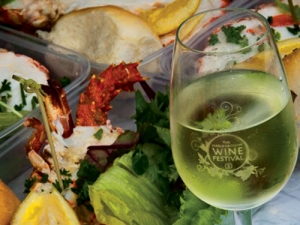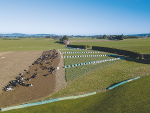As Chinese tourists flock to our shores, the New Zealand wine industry could help enhance their visits by catering more specifically to their needs and tastes, Lincoln University research suggests.
Aside from Australia, China has been the largest source of visitors to New Zealand since 2012, and annual visitor numbers are expected to reach 400,000 by 2018.
“We need to provide them with high-quality tourism activities during their stay and wine tourism has the potential to offer more of these experiences,” says tourism lecturer Dr Jo Fountain.
Wine is increasingly becoming a status symbol amongst wealthy Chinese consumers, with sales of New Zealand wine in China amounting to 26.9m in the year ended June 2013, from just 2.4m five years earlier.
“It would seem there is plenty of room to expand wine tourism to this market, but very little research has explored the synergies between the wine and tourism industries for Chinese visitors to New Zealand,” says Dr Fountain.
To investigate the issue further, and as part of a broader study, she has interviewed winery stakeholders and Chinese inbound tour operators who have insights into how visitors from China respond to wine tourism activities.
“The findings reveal increasing interest in winery visitation by some segments of the Chinese market, especially the longer-staying, premium holidaymakers, who visit both the North and South Islands,” says Dr Fountain.
“Students and new Chinese Auckland residents are also big potential markets, but they seem to have different motivations to international holidaymakers when it comes to visiting wineries.”
Short-stay holidaymakers are likely to visit wineries in tour parties, primarily to enjoy rural scenery, take photographs and relax. Their interest in learning about or buying New Zealand wine is limited, although they may purchase a bottle of the most prestigious wine available, Dr Fountain says.
However, students tend to visit wineries independently with their friends or family members, and along with new Chinese residents, they are eager to expand their knowledge of wines, she says.
“They are more likely to want to taste a range of wines, buy wine for their own consumption and learn about the art of winemaking. For some, it might represent an important step to ‘becoming Kiwi’.”
To maximise the potential of Chinese wine tourism, Dr Fountain’s research findings suggest the wine industry could engage Chinese visitors more by educating them about the culture of wine and the history and background of individual wineries, and recognise their motives for being there.
“Language barriers also need to be acknowledged. Wineries should not expect to rely on the tour guides accompanying Chinese visitors for translation, as these guides may not have the language skills to get the wine message across,” she says.
Greater publicity about New Zealand wine in China could also increase the appeal of wine tourism.
A Chinese inbound tour operator reported that a great deal of discussion was generated when Prime Minister John Key visited China and mentioned New Zealand wine, which showed a lot of potential for the market to expand.












